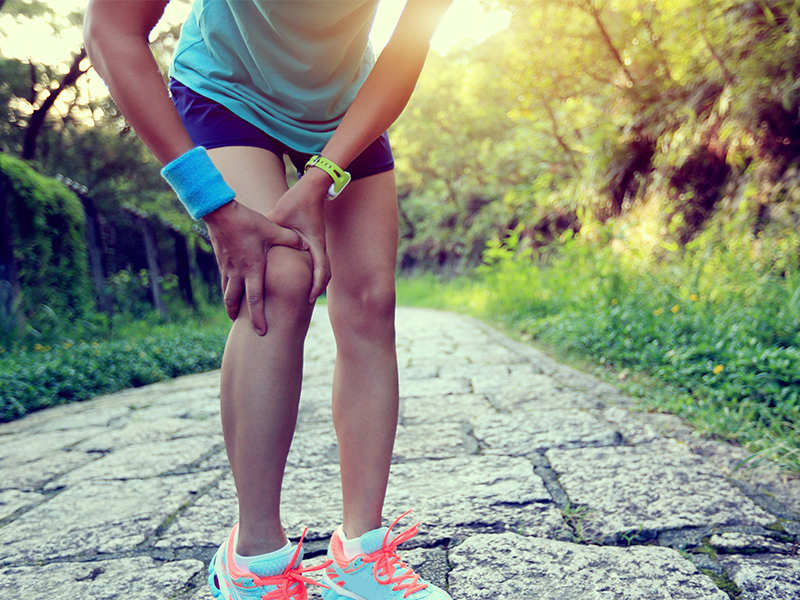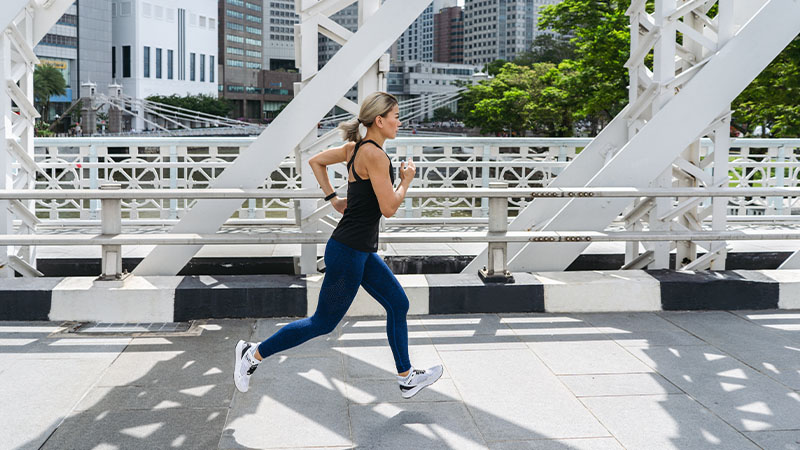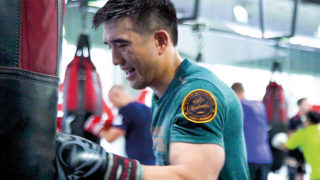Though knee pain is a common complaint among runners, running itself isn’t bad for the knees, according to UK-trained orthopaedic surgeon DR ALAN CHEUNG. Here, he explains why meniscal tears and other common knee injuries in runners occur – and how to prevent them!

Contrary to popular belief, running is not bad for the knees. In fact, research suggests that regular running can strengthen the joints and even protect against osteoarthritis. It’s running too far or too often and having poor running mechanics that lands runners in the orthopaedic office, says Dr Cheung. At International Orthopaedic Clinic, some of the most common causes of knee pain he sees in runners include:
#1 Runner’s knee
Poor alignment or tracking of the kneecap while running is usually to blame for this condition, which presents as pain under the kneecap that worsens with running, and walking up and down stairs. However, you don’t have to be a runner to suffer from runner’s knee. Any activity that repeatedly stresses the knee joint can cause this type of knee pain.
#2 Iliotibial band syndrome (ITBS)
Pain on the outside of the knee while running is the key characteristic of ITBS. Very common in distance runners, it occurs when the thick band of tissue that runs from the hip to the outside of the knee (iliotibial band) repeatedly rubs against the thigh bone, causing irritation in the nearby soft tissue.
#3 Meniscal tear
While meniscal tears most commonly occurs during contact sports, all it takes is a sudden twist, or getting up from a squat the wrong way, to create enough force to tear the meniscus – the rubbery shock absorber that provides cushioning between your thighbone and shinbone – resulting in pain, tenderness and a locking sensation.
#4 Patellar tendinosis
Also known as “jumper’s knee”, this injury affects the tendon connecting the kneecap (patella) to the shinbone. Athletes who repeatedly jump and run are at higher risk of this injury, as the patellar tendon is responsible for the knee’s ability to extend while running, kicking and jumping. Symptoms may include sharp pain at the front of the knee, or between the kneecap and shinbone, that worsens with running or climbing stairs.
#5 Osteoarthritis
This degenerative disease occurs when the cartilage lining of the knee joint breaks down and wears away over time. The subsequent bone-on-bone contact causes pain, inflammation and stiffness.
When to see a doctor
If you experience knee pain while running, Dr Cheung suggests resting or reducing your running distance, and icing the knee and using anti-inflammatories to help in the short term. He also recommends using a foam roller on the knee. If the pain is moderate to severe, affecting your work, exercise, sleep and quality of life, he suggests consulting a specialist. “The good news is that most runners do not require surgery, and can benefit from physiotherapy.”
How to reduce your risk of knee pain
Key to preventing knee pain is reducing your risk of knee injury in the first place. Dr Cheung suggests the following strategies.
- Mix up your routine to include other forms of exercise (cross-training) such as cycling or swimming.
- Make sure you have sufficient rest and recovery between runs – eight hours of sleep per night is ideal.
- Change your running shoes every 800km of running distance.
- Vary your running distance and speed – “train slow to go fast”.
- Take shorter, faster steps when running.
- If you’re new to running, and training for a longer distance race, increase your mileage very gradually
International Orthopaedic Clinic
#05-24 Mount Elizabeth Novena Specialist Centre, 38 Irrawaddy Road
6253 7111 | ioc-ortho.com
This article first appeared in Expat Living. You can purchase the latest issue or subscribe, so you never miss a copy!
To make the most of living in Singapore, read our latest City Guide here for free!
Don't miss out on the latest events, news and
competitions by signing up to our newsletter!
By signing up, you'll receive our weekly newsletter and offers which you can update or unsubscribe to anytime.




